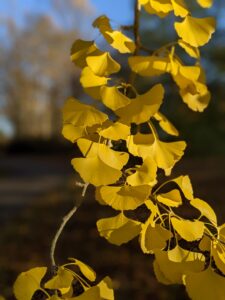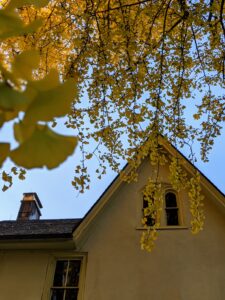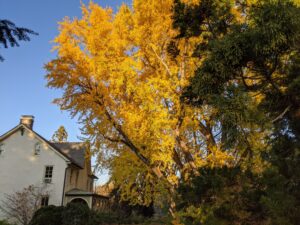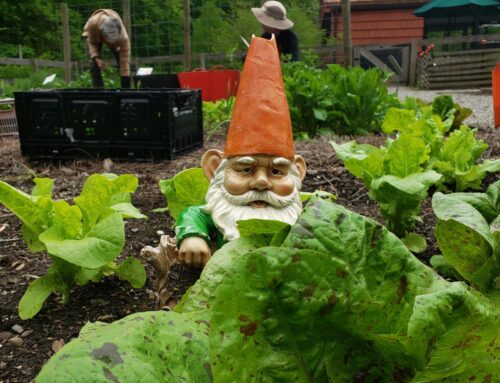Dating back 200 million years, it is the only living tree species that shared the landscape with dinosaurs. In the deep past there were many trees like the ginkgo; closely related species in the genus that looked similar and reproduced in a similar fashion. But they are gone now, remaining only in the fossil record while the ginkgo tree still stands.
Ginkgos are so ancient that we aren’t even entirely sure what animals ate their fruits. The strong, odoriferous smell of the ginkgo fruit most likely served to attract some ancient creature who consumed the fruit and carried the seed through the landscape in its stomach. That creature disappeared long ago, leaving the ginkgo to carry on without it. These transitions can be hard on tree species. Plants that evolved to have their seeds dispersed this way rely on their animal disperser to eat the fruit and leave the seed intact to pass through the digestive tract. That journey through stomach acid and the intestines ‘scars’ the seeds so they can germinate. Without that journey the seed falls at the feet of the parent plant and is less likely to sprout and survive. Even if it does grow, the species is frozen in place. It cannot travel without the creature it once depended on, which limits genetic variation and weakens the species. The ecosystem that the ginkgo evolved to work in partnership with has disappeared, leaving this species to adapt to an entirely new and unfamiliar world.
For the most part modern animals ignore the fruit, though they will consume the seeds. Once the flesh of the fruit is stripped away, it resembles a pistachio and is rich in protein. So how has this tree persisted through the millennia, even as all its relatives vanished?
In short, we don’t entirely know but humans almost certainly played a role. In the United States it’s common to see ginkgos planted on the street. Its delicate leaves, stunning fall color and high pollution tolerance make it ideal for the urban environment. In China and Japan the ginkgo has deep cultural significance. There it represents longevity and endurance. Trees in their native range can live for up to one thousand years. There are four ginkgo trees still standing that survived the bombing of Hiroshima. Ginkgo’s are often planted at Buddhist temples where they represent Buddha’s Dragon Tree. People eat the seeds as well, mainly in China where it is served in soup or as part of stir fries. It has medicinal uses too, traditionally as a treatment for respiratory concerns, including asthma and bronchitis. Ginkgo supplements made from the leaves have been used to improve memory and mental clarity.
The first written evidence of human cultivation of the ginkgo appears about a thousand years ago. Ginkgo’s were likely very rare at the time, though they have become more common since. This is the role of human horticulture. We can step in to carry these species into the future. You can see this story playing out in every public garden in the Philadelphia area when you see a Franklin tree (Franklinia alatamaha) or a Paperbark maple (Acer griseum). It’s likely that there is still some wild dispersal occurring of the ginkgo tree, but without humans, it’s possible that the species might be moving toward extinction, instead of being planted to shade our communities and spiritual sites.
The Painter Ginkgo, which grows behind Lachford, is a perfect example of this. A former state champion, this ginkgo is nearly 200 years old and was planted by the Painter brothers somewhere between 1840 and 1860. The ginkgo was introduced to the Americas by horticulturists who carried the seeds across an ocean and planted them to answer the age-old plant question: I wonder if it will grow?
Ginkgo trees are an incredible tool for scientists to study weather patterns and climate change. We are excited to collect our own data to preserve this snapshot of 2020 here at Tyler Arboretum, from one of our most iconic and beloved trees.









